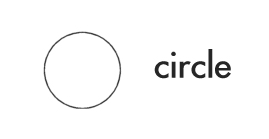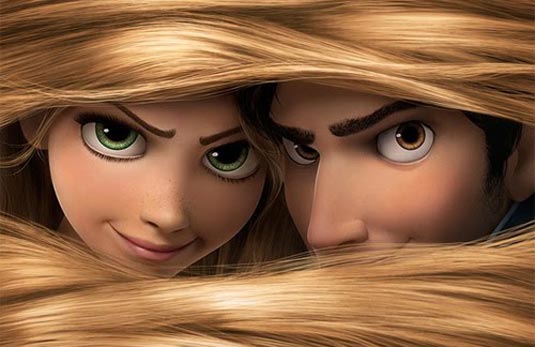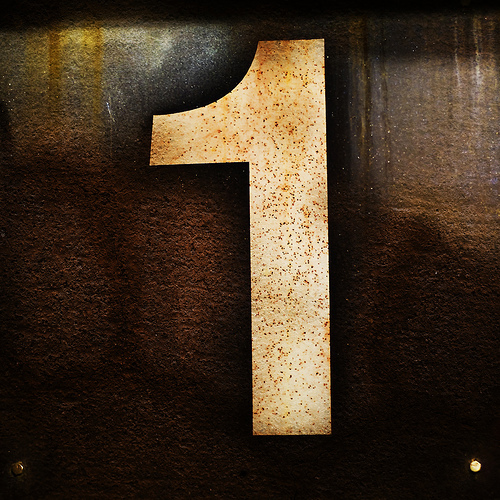“That which is imagined need never be lost.”—Clive Barker Neptune recently moved into its own sign of the zodiac, watery Pisces. In its own sign, Neptune comes home and is in the sign most closely connected to its own nature. What is that nature?
BOUNDLESS LONGING
 Neptune is typically associated with dreams and illusions and mystical longing. If the practical world is your home base and you strive to manage that world with ease, Neptune is challenging. Neptune provides dissolving and softening, like a muscle relaxant to the worked-out rigidities of the practical world. When it comes to the practical world, Neptune dutifully achieves its escapist reputation via fantasies, guilty pleasures, down-time, and countless other time-wasters that lure you away from “reality.” If reality is about being grounded, getting work done and being responsible, Neptune is more about having a deep, relaxing massage that never, ever, ever, ever, ever, ever ends.
Neptune is typically associated with dreams and illusions and mystical longing. If the practical world is your home base and you strive to manage that world with ease, Neptune is challenging. Neptune provides dissolving and softening, like a muscle relaxant to the worked-out rigidities of the practical world. When it comes to the practical world, Neptune dutifully achieves its escapist reputation via fantasies, guilty pleasures, down-time, and countless other time-wasters that lure you away from “reality.” If reality is about being grounded, getting work done and being responsible, Neptune is more about having a deep, relaxing massage that never, ever, ever, ever, ever, ever ends.
Neptune’s discovery in 1846 occurred during the Romantic period of western history. The power of the imagination contained within the Romantic vision is also contained within Neptune’s boundless waters, oceans, fogs, mysteries and yearnings. While Neptune’s longings may get in the way of fulfilling your real-world responsibilities, the great Romantics saw (and see) the world from a different perspective. Says James Hillman:
“To be filled with longing—that is fulfillment. Tell me what you long for, said the German Romantics, and I will tell you who you are.”
Fundamentally, Neptune is a longing. Longing for what, though? William Wordsworth, one of the great Romantic poets, writes, “Our birth is but a sleep and a forgetting / The Soul that rises with us, our life’s Star / Hath had elsewhere its setting.” The Neptunian part of you is the soul, longing for its home—its real home, elsewhere—a home you can barely remember but can never forget, a home you can only glimpse through imagination. While this longing for home feels intensely intimate and deeply personal, it’s a longing shared by every human, and from it emerges great art, great music, great movies, and great poetry. Within the essence of our imagination and artistic expression resides the source of who we are, as individuals and as a collective. The longing for that source is particularly strong when Neptune is in Pisces.
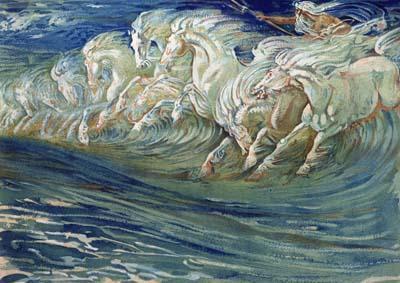 When Neptune was last in Pisces, the California Gold Rush brought countless people galloping over the rugged American terrain (imagine Neptune’s horses) longing for gold from the waters of California, establishing what has become the modern American Dream. Not surprisingly, popular culture (a strong carrier of Neptune) is currently envisioning the American West again: “Rango” features Johnny Depp as a heroic lizard cowboy who saves the water reserves of a dried-up town, and in the process meets the mystical Spirit of the West itself; the lead character in the television series "Justified" is a cowboy detective; British sci-fi show “Doctor Who” heads to America for the first time with the centuries-old time-traveling Doctor donning a Stetson; CW hit “Supernatural” brings the Winchester brothers into the Wild Wild West, cowboy hats and all; and this summer Harrison Ford stars in “Cowboys and Aliens.”
When Neptune was last in Pisces, the California Gold Rush brought countless people galloping over the rugged American terrain (imagine Neptune’s horses) longing for gold from the waters of California, establishing what has become the modern American Dream. Not surprisingly, popular culture (a strong carrier of Neptune) is currently envisioning the American West again: “Rango” features Johnny Depp as a heroic lizard cowboy who saves the water reserves of a dried-up town, and in the process meets the mystical Spirit of the West itself; the lead character in the television series "Justified" is a cowboy detective; British sci-fi show “Doctor Who” heads to America for the first time with the centuries-old time-traveling Doctor donning a Stetson; CW hit “Supernatural” brings the Winchester brothers into the Wild Wild West, cowboy hats and all; and this summer Harrison Ford stars in “Cowboys and Aliens.”
ORIGINS & MEMORIES
Water is the source of all life as we know it, according to science and according to most creation mythologies of cultures worldwide. The emergence of great art from the imagination shows more of Neptune’s nature as a womb-like source of creation.
 With these Neptunian connotations of the womb and birth, it’s not surprising that shortly before Neptune entered Pisces this year, Lady GaGa took the music world in her monster arms again and rocked it (to sleep?) with “Born This Way.” For the song’s premiere live performance, she arrived at the Grammy Awards in an egg, having incubated in it for three days prior so she could emerge from it to perform the song.
With these Neptunian connotations of the womb and birth, it’s not surprising that shortly before Neptune entered Pisces this year, Lady GaGa took the music world in her monster arms again and rocked it (to sleep?) with “Born This Way.” For the song’s premiere live performance, she arrived at the Grammy Awards in an egg, having incubated in it for three days prior so she could emerge from it to perform the song.
Again: “Our birth is but a sleep and a forgetting.”
In addition to its connection to life, water is also associated with memory. If Wordsworth is correct that when we are born we forget our true origins, Neptune’s longing reminds us with its subtle IV drip of memory that seeps into every moment of every life. We have glimpses of the eternal self we dream of being “if only....” It can be very difficult to hang on to that whiff of a memory, despite its enormous appeal, especially if it makes the world around us look all the more dreary, ordinary and dull. This leads to one of the most challenging components of both Neptune and Pisces: addictions.
THE ADDICT ARCHETYPE
One of the dangers of Neptune in Pisces, particularly relevant in today’s culture, is addiction. It’s hard to track cycles of addiction historically, because not only has addiction saturated our modern world, but the modern world—still rushing for gold—includes addiction to the modern world itself (shutting out the past, living “in the now”).
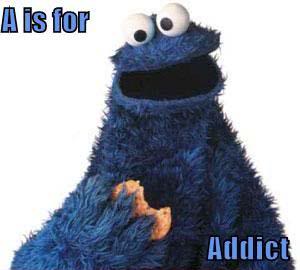 Neptune’s longing for home is also a longing for eternity, to be outside of the tight, restrictive bounds of time and space with its limits and walls and separation and aloneness. These longings can be so powerful and overwhelming (oceanic) that we may try desperately grabbing on to something—anything!—in the world around us to make them go away. We grab onto the illusion that eating enough chocolate bars or cookies will make them go away. See, addictions aren’t just a desperate attempt to escape the dull, drab, ordinary world of limits, or to escape from the emotional wreckage of a troubled childhood. That is one component. Addictions are also—from the other direction—an attempt to shut out eternity, to occlude the memory of eternity we each carry. This is why, in the throes of addiction, the one particular thing in the one particular moment of “now” becomes so vitally important.
Neptune’s longing for home is also a longing for eternity, to be outside of the tight, restrictive bounds of time and space with its limits and walls and separation and aloneness. These longings can be so powerful and overwhelming (oceanic) that we may try desperately grabbing on to something—anything!—in the world around us to make them go away. We grab onto the illusion that eating enough chocolate bars or cookies will make them go away. See, addictions aren’t just a desperate attempt to escape the dull, drab, ordinary world of limits, or to escape from the emotional wreckage of a troubled childhood. That is one component. Addictions are also—from the other direction—an attempt to shut out eternity, to occlude the memory of eternity we each carry. This is why, in the throes of addiction, the one particular thing in the one particular moment of “now” becomes so vitally important.
See, with Neptune we always have a paradox, and with Pisces we always have two fish. From whichever direction we approach addiction—as an escape from this world or as an escape from the memory of eternity—the question still remains of how to deal with the paradox of addiction. Apparently, eating the chocolate bars, drinking the alcohol, smoking the joint, spending the money, or working overtime-and-then-some, never really works. Working never works, and escaping is no escape, so what’s left?
THE MYSTIC ARCHETYPE
 If the Addict archetype is one of the two fish, the other is the Mystic archetype. They work together: little fish, big fish. The Addict is a Mystic, trapped in illusion. Trying to escape from confining limits, the Addict only finds himself more confined (to twelve steps, one at a time, for example); running from eternity, he only finds himself closer to it (addiction takes its toll on the body)—no wonder Neptune has a reputation for confusion!
If the Addict archetype is one of the two fish, the other is the Mystic archetype. They work together: little fish, big fish. The Addict is a Mystic, trapped in illusion. Trying to escape from confining limits, the Addict only finds himself more confined (to twelve steps, one at a time, for example); running from eternity, he only finds himself closer to it (addiction takes its toll on the body)—no wonder Neptune has a reputation for confusion!
While the Addict is devoted to the ego, the Mystic is devoted to the soul. While the Addict shuts out memories of eternity and of the past to live in an isolated moment of “now,” the Mystic embraces it all, now, and celebrates with an exuberant dance of life. Neptune’s longing for the soul—a bane for the Addict of earth—is the Mystic’s key to unlocking the paradise of life on earth. Where the Addict sacrifices life for the sake of the addiction, the Mystic makes all of life sacred (the true meaning of “sacrifice”).
When the ordinary world is too dull and uninteresting—or way too distressed—think like a Mystic. Through the eyes of the Mystic, what is “ordinary” (regular) becomes “ordained” (holy)—the two words have the same etymological roots. This transformation from something plain to something sacred is what Neptune is all about. Everything seems to stay the same, yet everything has changed. It’s what happens when reading a poem, and why so much of poetry consists of seemingly “normal” images which somehow become magical through the vehicle of poetry. When we operate from the imagination, the whole world becomes sacred. Rather than trying to feed the insatiable ego, we can satisfy the soul.
When Clive Barker wrote in his book Weaveworld, “That which is imagined need never be lost,” he hit on the Neptunian connection between memory and imagination, and how the imagination can return soul (eternity) to the world around us. The world needs our imagining, not our escape into literalism. The world needs our participation, because how we image things makes all the difference in the world, in what we create and how we create. While Neptune is in Pisces, we have the opportunity to weave eternity into the world around us—our home away from Home—with threads of the imagination, one end tied to the true source of who we are and the other end open to sacred connection. Eternity is real, it’s right in front of us, and it’s only a fantasy away.
